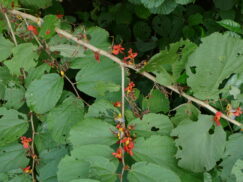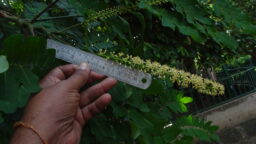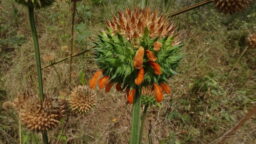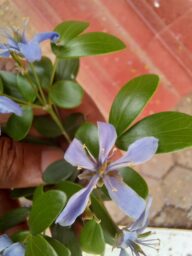Common Name: East-Indian Screw tree. Tamil Name: Valam-piri.

East-Indian screw tree is actually a shrub that grows to around 2.5 to 3 meters high. Commonly seen in forest edges in Western Ghats area in Tamilnadu. The stem is dark brown, lenticulate and has sporadic black spots. The simple leaves are arranged in an alternate manner; the leaf margin is gently serrated. The lower surface of the leaf is soft and the upper surface has a rough finish. The leaf stalk and leaf measure around 5 mm and 12 cm respectively. The leaves are ovate to orbicular in shape with cordate base and an acuminate tip. The inflorescence is a few flowering axillary cyme bunched directly on the branches. The flowers are initially covered completely by the yellow calyx elements. The flowers are bright red in color with five unequal petals. The flowers appear upright on the branches with the long style sticking well out of the tubular flower. The flowers age to light blue color. The fruit is screw shaped, wrinkled, beaked and black in color. The flowers are nectar and pollen rich and much sort after by insects and birds. East-Indian screw tree is the larval host plant for Golden angle, Indian nawab, Blue nawab and Common sailor butterflies. The bark of the plant is used to make strong water resistant ropes.





